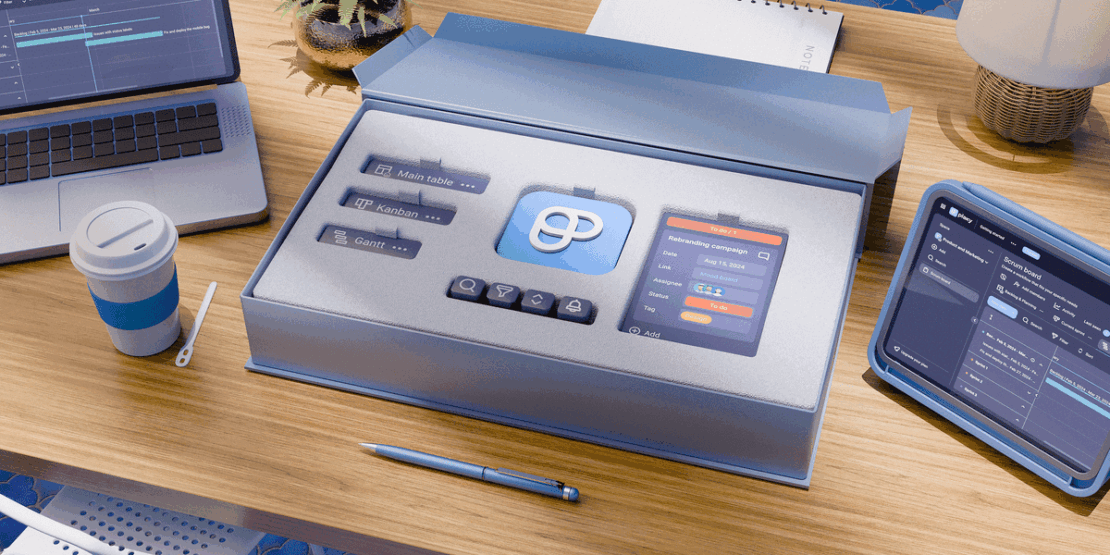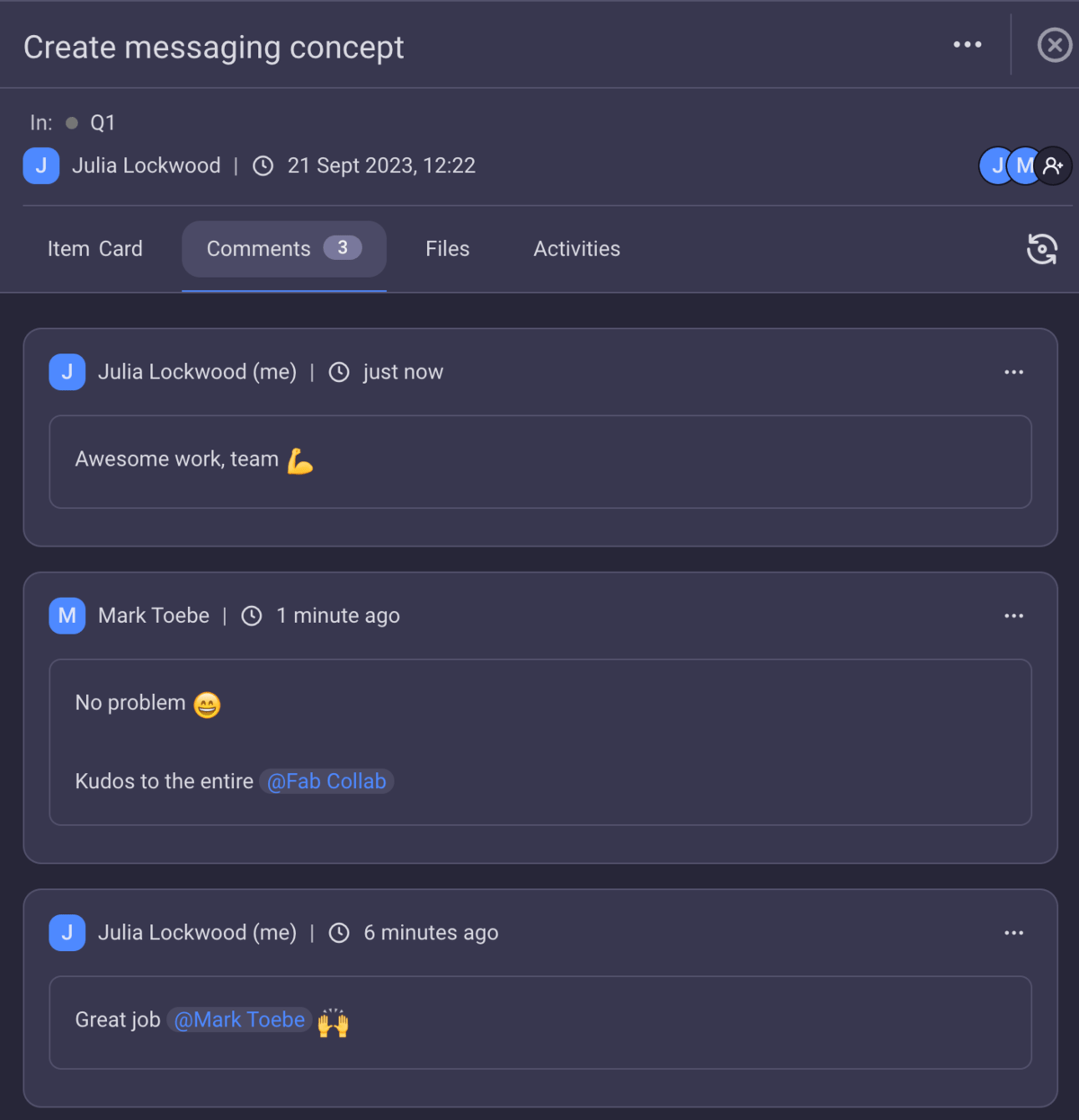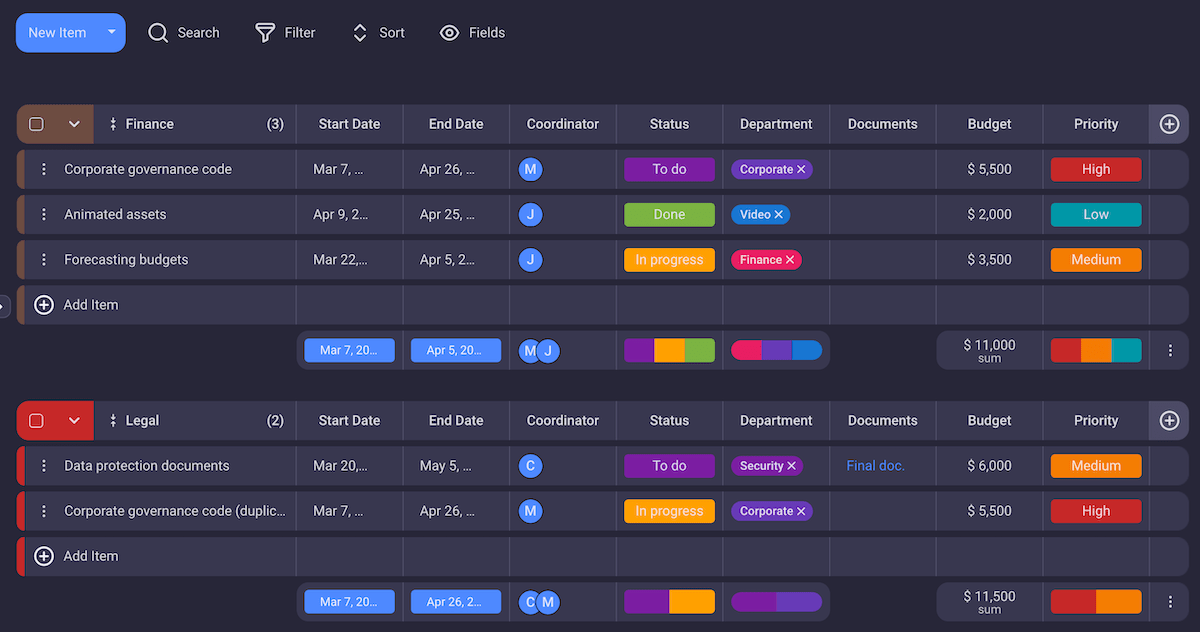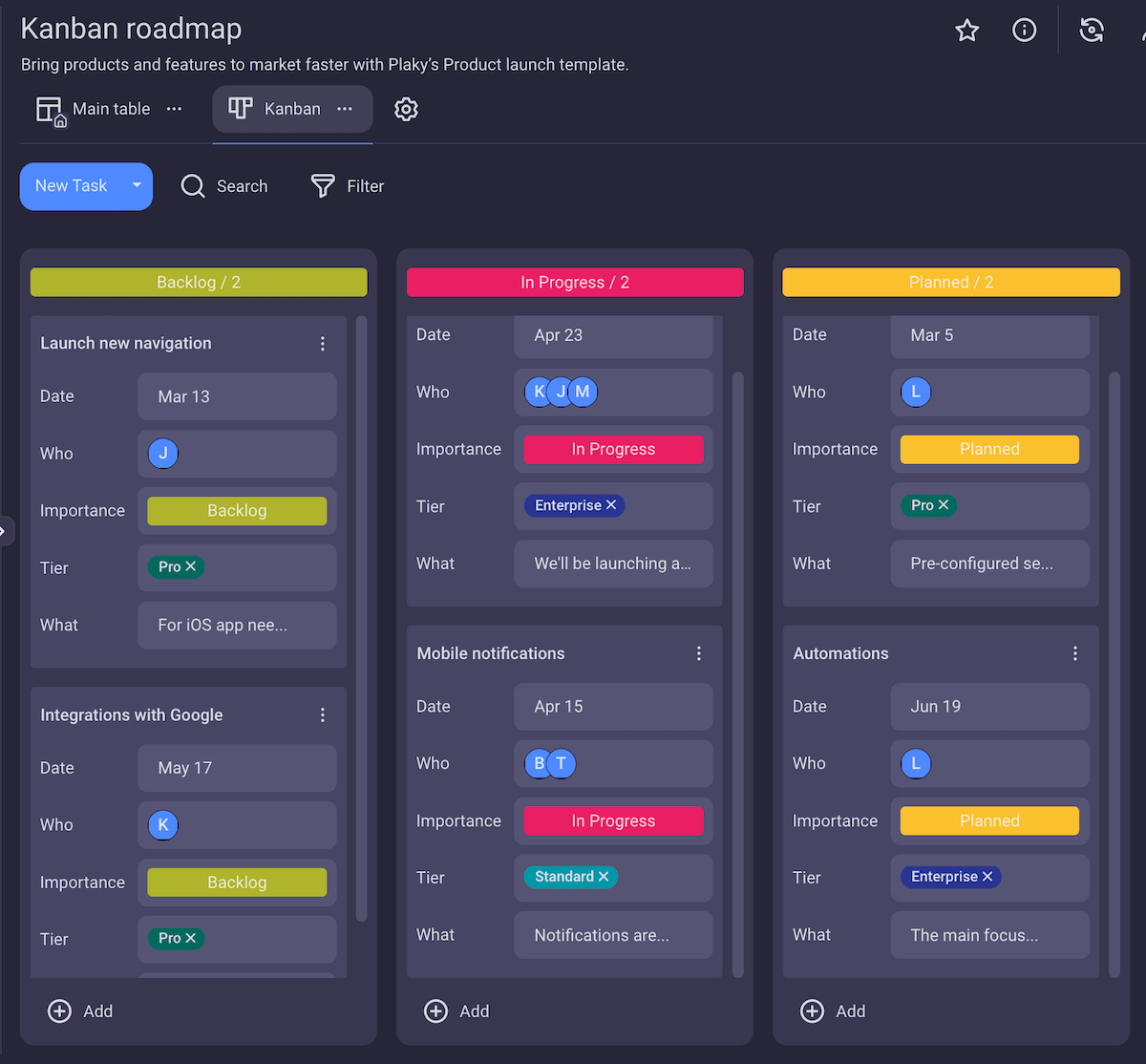The remote and hybrid work models have become the staple of the modern workplace. Even complex professions that heavily rely on effective communication — like project management — have been swept up by the digital revolution.
The many benefits of the work-from-home option and the fast-evolving digital project management tools are slowly making the return to the office unnecessary.
But, the virtual office comes with its own set of challenges that project managers have to learn how to handle.
- What are these benefits that have made both employers and employees embrace remote work in spades?
- What are the challenges of virtual project management?
- What can project managers do to improve their remote project management skills?
These are the main questions we’ll be answering in this virtual project management guide.

In this article:
What is virtual project management?
Virtual project management is the process of managing projects through a remote project management team.
Managing projects in a virtual environment is not much different from traditional project management — the tasks are distributed in much the same way, and the milestones, project deadlines, meetings, and project phases are all handled as you would expect.
What makes virtual project management so challenging is managing a dispersed team of people from different countries, backgrounds, and time zones, who have likely never had a chance to meet in person.
However, the value of virtual project management is high enough to make the obstacles worth scaling.
Virtual project management benefits
A vast majority of US citizens choose to continue working from home even if they have a chance to return to the office.
Furthermore, the average number of work-from-home days has increased from 1.58 to 2.37 between January 2021 and June 2022.
And, there are several reasons behind these occurrences:
- Higher employee job satisfaction,
- Higher employee retention,
- Access to a wider talent pool,
- Improved team productivity, and
- Lower operating costs.

Reason #1: Higher employee job satisfaction
When given the option to choose, 76% of remote workers in the US continue working from home, and it’s not difficult to see why.
Most people seek to obtain a work-life balance. Remote work allows employees the flexibility of choosing when, where, and how they work.
Working in a virtual team allows employees to:
- Arrange their time according to their needs,
- Stop wasting time on long commutes,
- Spare more time for themselves and their loved ones, and
- Eliminate the anxiety from constantly feeling monitored.
As studies show, these benefits greatly contribute to overall employee job satisfaction.
💡 Plaky Pro Tip
Looking for ways to take your employee experience to the next level? Check out this guide:
Reason #2: Higher employee retention
Continuing along the previous note, people who are satisfied with their jobs are much less likely to leave them.
The pandemic has made people rethink their priorities. This has resulted in an increasing number of employees passing up on higher-paid jobs, or even accepting pay cuts in exchange for working remotely.
Being comfortable and satisfied with their jobs has become a priority for many. So, in addition to increasing company loyalty, the option of working virtually has a high chance of also attracting new employees to your project management team.
💡 Plaky Pro Tip
Working on employee retention is an ongoing process that starts as early as onboarding. Here’s how to make your onboarding process better:
Reason #3: Access to skilled employees from across the globe
Speaking of attracting new employees, one of the biggest benefits virtual offices offer is access to talent beyond the organization’s geographical area.
This benefit alone is worth taking on the challenges of virtual project management, especially in agile project teams and in sectors such as IT, where most of the work is done using a computer in the first place.
Organizations that still insist on working from the office full-time are vastly limiting their options and chances of success.
Reason #4: Improved team productivity
While it might seem logical to think that working in a distracting home environment would decrease productivity, research shows otherwise. In fact, remote employees work more.
According to a study of 3,143,270 people, the average workday of a virtual team member has increased by 8.2%, or 48.5 minutes, compared to those working from the office over the course of the pandemic.
Another interesting fact is that remote workers don’t take as much time off.
The flexibility of virtual offices allows employees to work while traveling. Thanks to this perk, 63% of employees took 3 weeks of vacation or less over the course of the year. Of those employees, 20% took only one week, or no vacation at all, even though 32% of remote workers get unlimited vacation, as Buffer reports.
Reason #5: Lower operating costs
One of the most attractive benefits of virtual project management for employees is the reduced cost of running an office.
Cutting down, or even eliminating work from the office allows employers to reduce the costs associated with:
- Rent,
- Utilities,
- Employee commute expenses, and
- Office perks such as coffee, drinks, snacks, and more.
According to Global Workplace Analytics, employers could save between $20,000 and $37,000 per employee, per year if they allowed full-time telecommuting.
6 Most common virtual project management challenges
The benefits of virtual project management teams are undeniable. But, to get the most out of them, virtual project managers must first overcome a set of 6 common challenges that come with physical distance:
- Maintaining effective communication,
- Overcoming cultural differences,
- Building trust,
- Monitoring and tracking,
- Overcoming equipment issues, and
- Scheduling difficulties.
💡 Plaky Pro Tip
To learn more about the most common project management challenges regardless of the work environment, check out this text where we go over 10 common challenges project managers face when managing a project and how to overcome them:
Challenge #1: Maintaining effective communication
Distributed teams often face the problem of slow, ineffective, or insufficient communication.
The first and most important step to achieving success as a virtual project manager is tackling the communication issue.
Effective communication is crucial for project teams to:
- Understand their assignments,
- Understand the project vision,
- Provide and receive updates on their progress,
- Provide and receive feedback and constructive criticism,
- Connect with their coworkers and build camaraderie and trust.
However, good communication is much more difficult to achieve with distributed teams. This is why keeping communication consistent and using the right channels is so important in achieving unity in your virtual team.
Some of the ways project managers can improve communication in their virtual team are:
- Keeping emails to a minimum,
- Using an instant team chat platform to keep your teams in the loop and foster informal communication,
- Holding short but frequent virtual meetings, and
- Arranging team building activities.
💡 Plaky Pro Tip
Effective communication is the foundation of successful project management, especially when it comes to virtual teams. Learn more about this in the article below where we explain the communication problems project managers face and how to overcome them:
Challenge #2: Overcoming cultural differences
Not all remote teams face the problem of cultural differences. But, international talent sourcing makes this a much more common issue in virtual teams than in traditional office environments.
With the prevalence of English in cross-cultural teams, it can be easy to forget that not everyone has the same background and responds equally to the same cultural cues.
In other words, people tend to assume that others are similar to themselves. This makes them forget about important non-verbal cues, stereotypes, historical circumstances, language differences, and other cultural barriers that might create misunderstandings or friction in cross-cultural virtual teams.
An important job of a virtual project manager is to smooth out any wrinkles in communication that might appear as a result of these barriers so that the project may continue to flow smoothly.
Challenge #3: Building trust
Establishing trust between virtual team members is an equally important and difficult task.
Remote workers tend to operate as individuals, even though they are technically part of a larger team. In situations where they would usually ask for advice or help from a coworker, a member of a virtual team tends to have an “I’ll do it myself” approach.
In project management, this is a recipe for disaster, which is why virtual project managers must make an effort to build trust among team members.
Challenge #4: Monitoring and tracking
Building trust between the project manager and their virtual team is another important matter.
Studies have found that virtual project managers, especially those new to the remote work model, find it difficult to trust their employees to do their jobs.
In other words, they fear losing control over their virtual team due to physical distance, which can lead to issues like:
- Micromanagement,
- Frequent messaging and asking for updates,
- Using software to track whether employees are working, and
- In extreme cases, asking employees to have their cameras on the entire time while working.
All of the above-mentioned types of monitoring can only lead to greater anxiety in remote workers and must be addressed by the project manager.
Challenge #5: Overcoming equipment issues
Organizations that support full-time telecommuting are expected to provide proper equipment to their virtual project management teams.
This refers to both reliable hardware and software that will allow remote teams to perform equally well at home as they would in the office.
Challenge #6: Scheduling difficulties
Working from home gives virtual teams the opportunity to choose when and how they work. However, this can create issues with synchronization, especially when team members are dispersed across several different time zones.
Seeing as how projects are time-restricted and issues often require immediate attention, this can become a serious issue if left unaddressed.
Hence, virtual project managers might need to create work schedules that everyone can follow so that the project doesn’t go out of control.
6 Tips for better virtual project management
Since we’ve discussed major issues in virtual project management, it’s only fair we give you a few tips on how to minimize their negative impact and reap all the benefits that come with managing remote project teams.
Here are our 6 tips to improve your virtual project management skills.

Tip #1: Overcommunicate
When leading a virtual team, you don’t have the luxury of getting to know them in an informal setting. Once your team meeting or one-on-one is over, your interaction is finished, which is why you have to overcommunicate in order to build connections and trust.
Now, by this, we don’t mean that you should bombard your team members with instant messages and constant update checks and reminders. But, you should make sure to be present and engaged during work hours and make them feel like they’re actually part of the team, and not freelancing from their basement.
Make sure you have several communication channels at the ready — formal and informal.
Make good use of team chat apps to create an informal environment for sharing news, updates, or even funny pictures. This is where you’ll be able to chat with your team as you would around the office but also reach them on short notice if needed.
And, if you like to be more involved and get to know your colleagues on a more personal level, social media is a great way to do that.
When it comes to work-related content, having a single platform for sharing important information that everyone can access — such as a company wiki — would be ideal. This will make sure everyone stays in the loop at all times and promote transparency and trust in the virtual office.
Tip #2: Make the most of your meetings
As we touched on before, you don’t have many chances to organically interact with your team members outside of meetings, so you should make every meeting worthwhile.
Always come prepared. Make sure you have a clear agenda and use your group meetings to:
- Brainstorm,
- Discuss major changes or updates to the project,
- Resolve project issues,
- Resolve team conflicts, and
- Conduct informal team building.
However, you should also avoid running meetings that “could have been an email”.
Tip #3: Always have your cameras on
Virtual project managers lack enough face-to-face interaction with their team members as is. This is why requiring everyone to keep their cameras on during meetings is a great way to simulate in-person meetings you would normally have in the office.
This will allow both you and the team to catch on to each other’s mannerisms, read facial expressions, and overall get to know each other better.
💡 Plaky Pro Tip
Taking a group of geographically dispersed individuals and shaping them into a strong team is not easy. There will be personality conflicts and varying levels of willingness to cooperate. However, there are some things you can do to slowly make them feel like they belong together. To get more tips on this topic, take a look at this article:
Tip #4: Arrange IT support
As we discussed before, organizations should take care of their virtual teams by providing them with the proper equipment and remote work software. IT support should be another part of this package.
Despite working from home on their computers, not everyone is equally tech-savvy. So, making sure that they have the support they need in case something goes wrong is vital if your team is to perform their duties without any technical difficulties.
💡 Plaky Pro Tip
If you need help with choosing the right remote work software, here’s the article on that topic to ease your burden:
Tip #5: Do team-building exercises
A remote team barely has the chance to see, let alone meet each other in person. So, doing occasional virtual team-building exercises is a great way to bring them all together and let them get to know each other better.
These activities can be as simple as having people write appreciation cards or answer a few questions about themselves at the end of an online meeting. Alternatively, there can be monthly meetings specifically geared toward bringing the team together.
In cases where team members are located close enough to meet, hosting occasional live team-building events is also a great option.
Tip #6: Use project management software
Using project management software is an absolute must for virtual teams to stay organized at work. There is no better tool for managing your team and project than a reliable software solution where you can:
- Assign tasks,
- Keep track of project milestones and deadlines,
- Monitor progress,
- Share files,
- Give feedback, and
- Have your entire team collaborate effectively in one place.

Digital project management tools don’t cost too much considering the value they offer. And some, like Plaky, offer a generous free plan, which is perfect for smaller teams and businesses.
Plaky’s ease of use will allow your team members to effortlessly create and track their tasks. The platform even offers a variety of templates that will help you kick off your project without wasting time on creating boards for all your different projects.
💡 Plaky Pro Tip
If you’re managing a small virtual team, you’ll need reliable PM software that won’t break the bank. Take a look at our lists and take your pick:
How to manage virtual projects using PM software
Project management software has become an irreplaceable tool in both traditional and virtual project management. Not only does it allow paperless storing and distributing of files, but it also greatly facilitates project tracking and information management.
Most project management software is intuitive and easy to grasp, and some of them, like Plaky, offer high customizability and simple drag-and-drop controls.
To begin managing your projects using a PM software, all you need to do is create your space by logging in and start adding and naming tasks.

Next up, simply assign those tasks to your team members, add custom tags, labels, and project roadmap, keep track of your project timeline and deadlines, and watch the cogs of your projects spin.

Once any changes happen to the tasks you’re subscribed to, you and all the team members associated with the task will promptly receive a notification, which will help keep everyone in the loop.
And, the best thing about PM software is that it works regardless of the project management methodology you use. If table view doesn’t work for you, Plaky allows you to easily switch to Kanban view and back with the simple click of a button, making your virtual project management smooth and efficient.

Managing projects in a virtual environment is made easy with the right kind of software. If you want to start using project management software to better manage your teams and projects, you can sign up for Plaky’s free account and reap all the benefits of this powerful tool.
